How to Prevent Food From Sticking to the Wok: Easy Methods
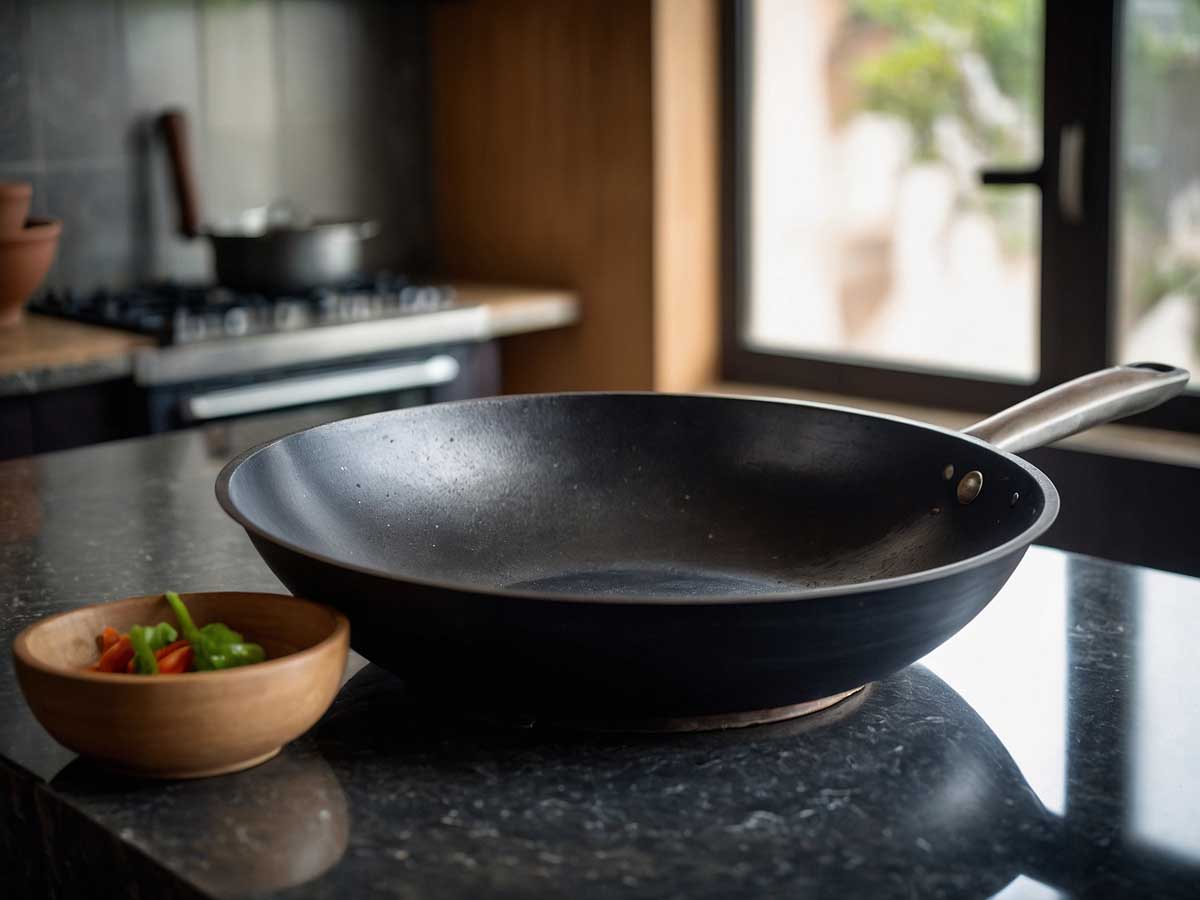
Prevent food from sticking to the wok is a common challenge that can ruin your cooking experience. When food sticks, it not only makes cooking frustrating but also affects the taste and presentation of your dishes.
This article will cover practical wok cooking tips and techniques to help you stop food from sticking in wok. With these insights, you’ll find cooking with a wok more enjoyable and efficient, leading to delicious and perfectly cooked meals every time.
Top Tips on How to Prevent Food from Sticking to the Wok Every Time
Here’s how to stop food from sticking in wok properly:
Proper Preheating of the Wok
One of the most crucial steps in preventing food from sticking to your wok is proper preheating. Preheating the wok until it starts to smoke is essential. This step ensures that the pores of the metal close, creating a naturally non-stick surface. Here’s how to do it:
- Place the wok on the burner and turn the heat to high.
- Allow the wok to heat up for a couple of minutes. You’ll know it’s ready when it starts to smoke slightly.
- Once the wok is smoking, add your oil. The high temperature helps the oil spread evenly and create a barrier between the food and the wok.
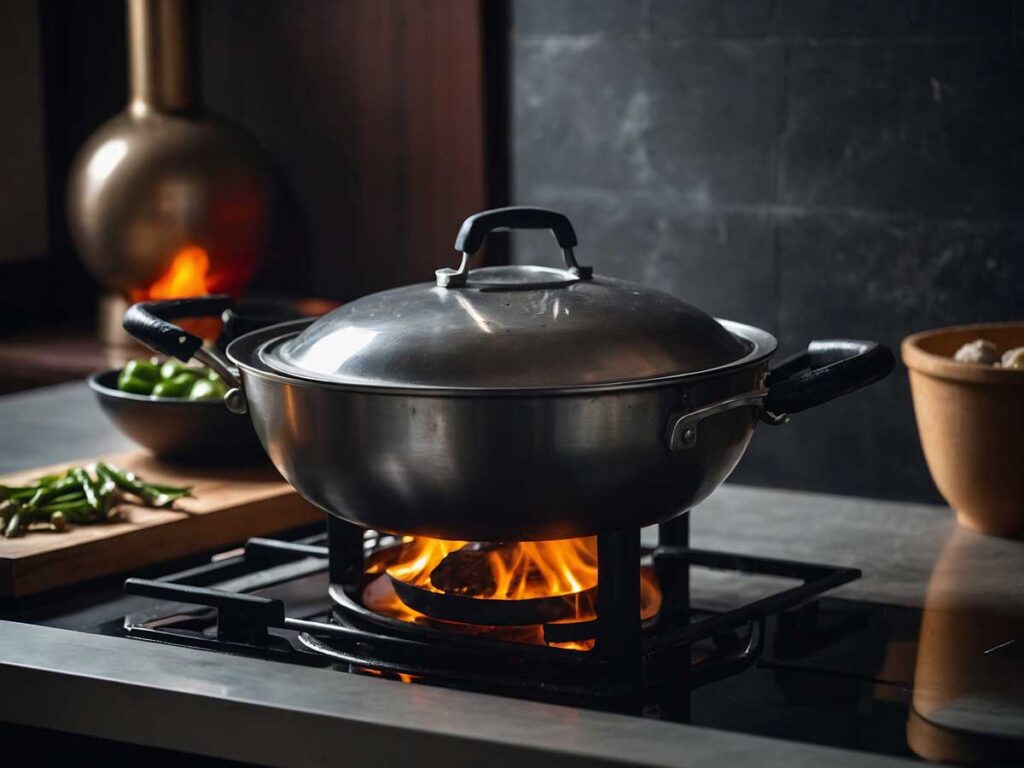
This technique, often referred to as the hot wok technique, is fundamental for successful wok cooking. It ensures that your ingredients slide around smoothly rather than sticking and burning.
Choosing the Right Oil
Selecting the best oil for wok cooking is another key factor in preventing food from sticking. Oils with high smoke points are ideal because they can withstand the intense heat required for wok cooking. Some excellent options include:
- Canola oil: With a smoke point of around 400°F (204°C), canola oil is a versatile choice.
- Grapeseed oil: This oil has a smoke point of about 420°F (216°C) and a neutral flavor, making it great for high-heat cooking.
- Peanut oil: Known for its high smoke point of 450°F (232°C) and subtle flavor, peanut oil is a favorite for many chefs.
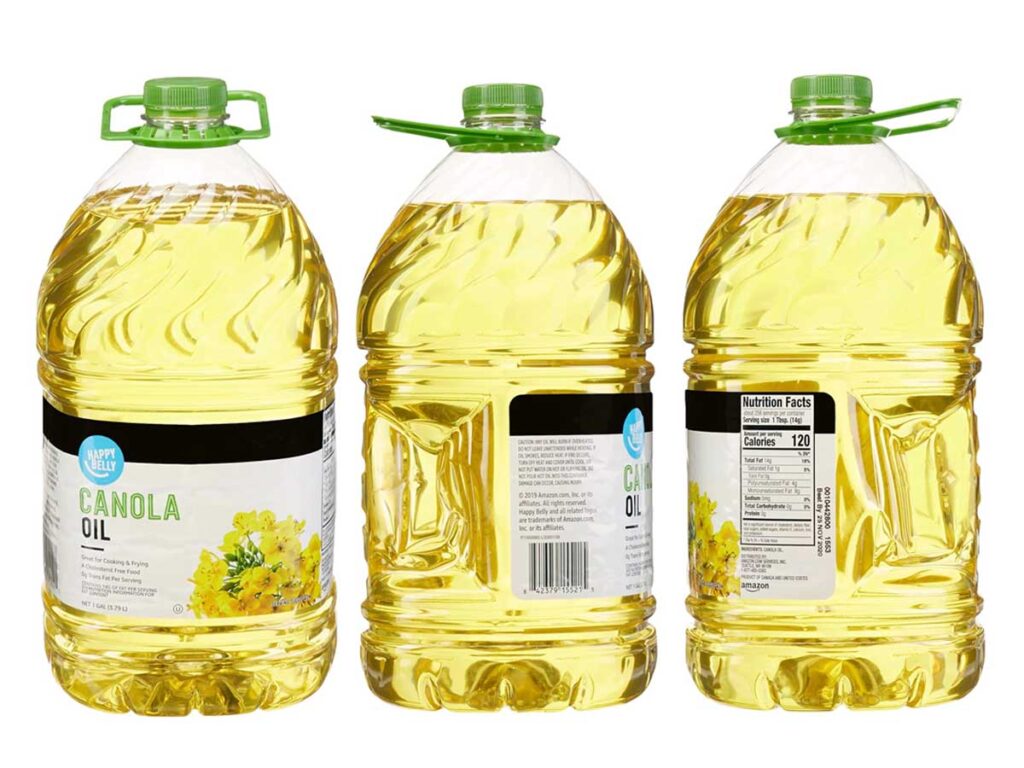
Avoid using oils with low smoke points, such as olive oil, as they can burn quickly and leave a residue that makes food stick. By choosing oils like canola oil, grapeseed oil, or peanut oil, you ensure your wok stays slick and your food cooks perfectly.
Seasoning the Wok
Seasoning a wok is a vital process that enhances its non-stick properties and improves its overall performance. Here’s a step-by-step guide on how to season wok:
- Clean the wok: Wash the wok with hot water and a soft sponge to remove any factory coating or impurities. Dry it thoroughly.
- Heat the wok: Place the wok on high heat until it starts to smoke. This opens the pores of the metal.
- Add oil: Pour a small amount of oil with a high smoke point (such as canola, grapeseed, or peanut oil) into the wok.
- Spread the oil: Use a paper towel or cloth to spread the oil evenly over the entire inner surface of the wok. Be careful not to burn yourself.
- Heat again: Continue heating the wok until the oil starts to smoke and then turn off the heat.
- Cool and repeat: Let the wok cool down, then repeat the oiling and heating process 2-3 more times.
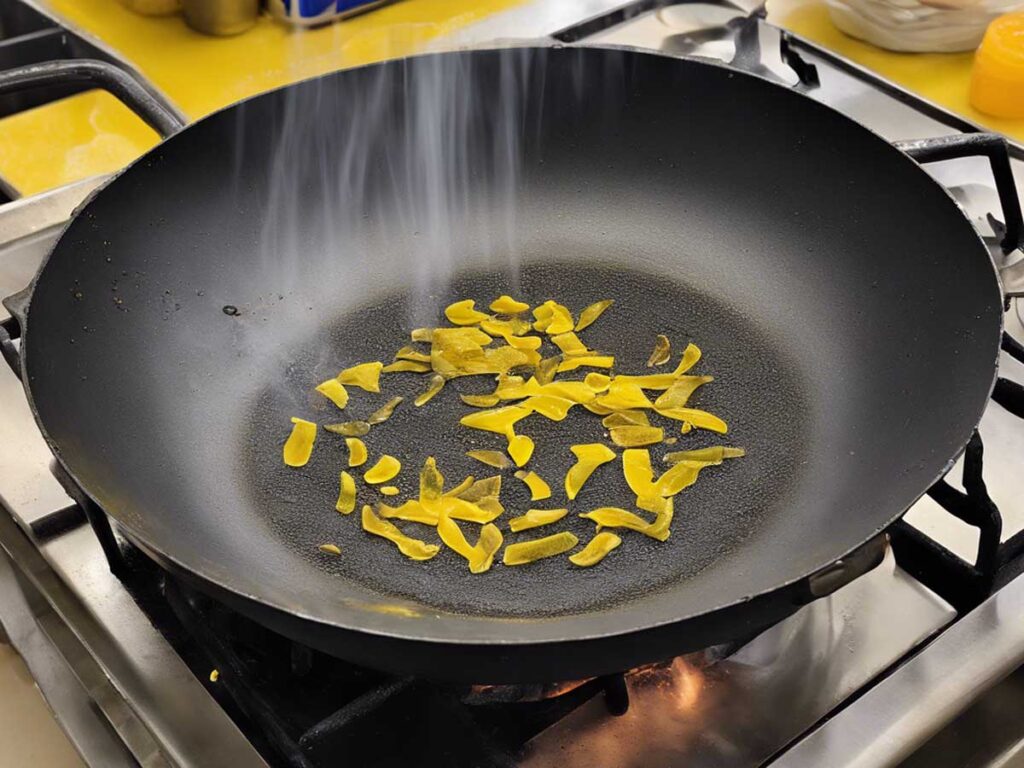
The benefits of a well-seasoned wok are immense. It not only creates a non-stick surface but also enhances the flavor of your dishes over time. Proper seasoning can make a significant difference in your cooking experience, ensuring that your food cooks evenly and doesn’t stick to the wok.
Keeping Food Dry
One critical step to prevent food from sticking to the wok is ensuring your ingredients are dry before cooking. Dry food before cooking because wet food lowers the temperature of the oil, which increases the chances of sticking. Here’s why:
- Lower Temperature: When you add wet food to hot oil, the moisture causes the oil temperature to drop rapidly. This prevents the food from searing properly and leads to sticking.
- Steam Creation: Moisture from wet food creates steam, which interferes with the wok’s ability to cook evenly and quickly.
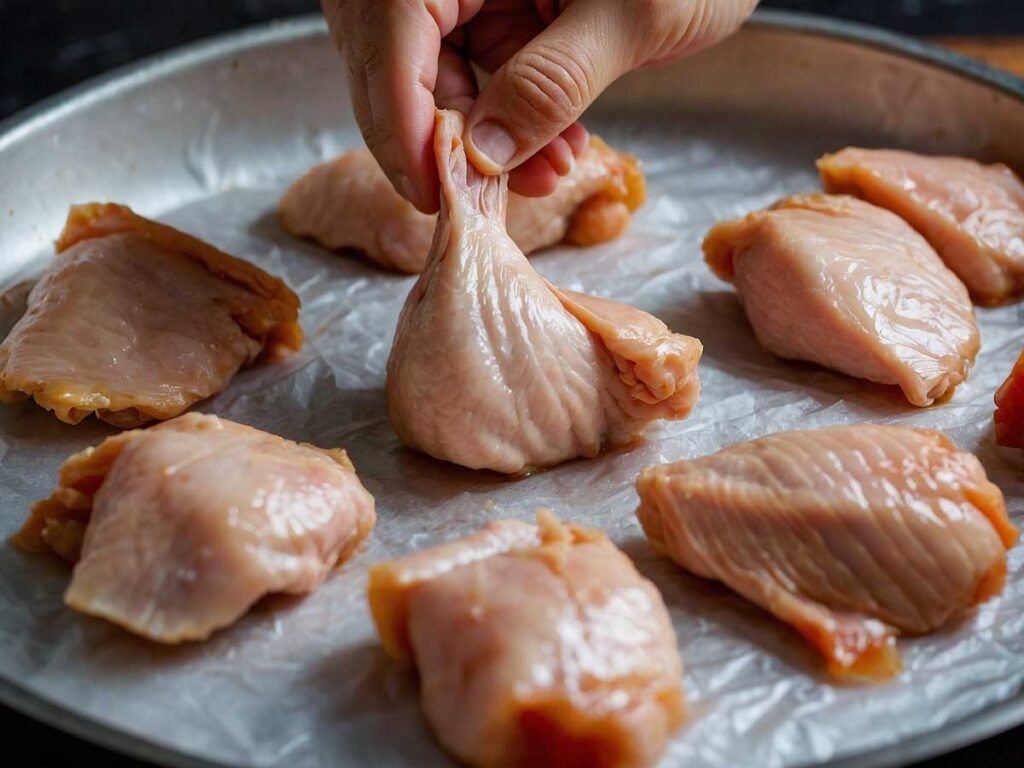
To prevent food moisture in wok, make sure to pat your ingredients dry with paper towels before adding them to the wok. This simple step can make a big difference in your cooking results.
Using the Right Utensils
Using the best utensils for wok cooking is essential for maintaining the wok’s non-stick properties and avoiding scratches. Long-handled wooden or silicone utensils are highly recommended. Here’s why:
- Wooden Spatula: A wooden spatula is gentle on the wok’s surface and won’t cause scratches that can lead to sticking.
- Silicone Utensils: Silicone utensils are heat-resistant and non-abrasive, making them ideal for use with a wok.

Proper utensils help in maintaining the integrity of your wok’s surface, ensuring it remains non-stick and durable for longer periods. Avoid metal utensils, as they can damage the wok’s coating and create sticking issues.
Managing Cooking Temperature
Effective temperature management is key to successful wok cooking. High heat is crucial, but it must be managed carefully to prevent burning the oil and ingredients. Here are some tips on controlling wok cooking temperature:
- Preheat Properly: Always preheat your wok before adding oil, as mentioned earlier. This step is essential for reaching the right cooking temperature.
- Adjust Heat as Needed: Start with high heat to sear your ingredients, then adjust the heat as necessary to maintain a steady temperature without burning.
- Use a Thermometer: If you’re unsure about the temperature, using a thermometer can help you keep it in check. Aim for temperatures between 350°F to 400°F for most stir-fry dishes.
By learning how to control heat in wok, you ensure that your food cooks evenly and doesn’t stick to the surface.
Avoid Overfilling the Wok
Another important tip is to avoid overfilling the wok. Adding too much food at once lowers the overall temperature, which can lead to sticking. Here’s what you should do:
- Cook in Batches: If you have a large amount of food, it’s better to cook in batches rather than trying to fit everything into the wok at once. This ensures that each piece of food gets enough contact with the hot surface.
- Maintain High Heat: Overcrowding the wok can cause the temperature to drop, making it difficult to achieve a good sear and increasing the risk of sticking.
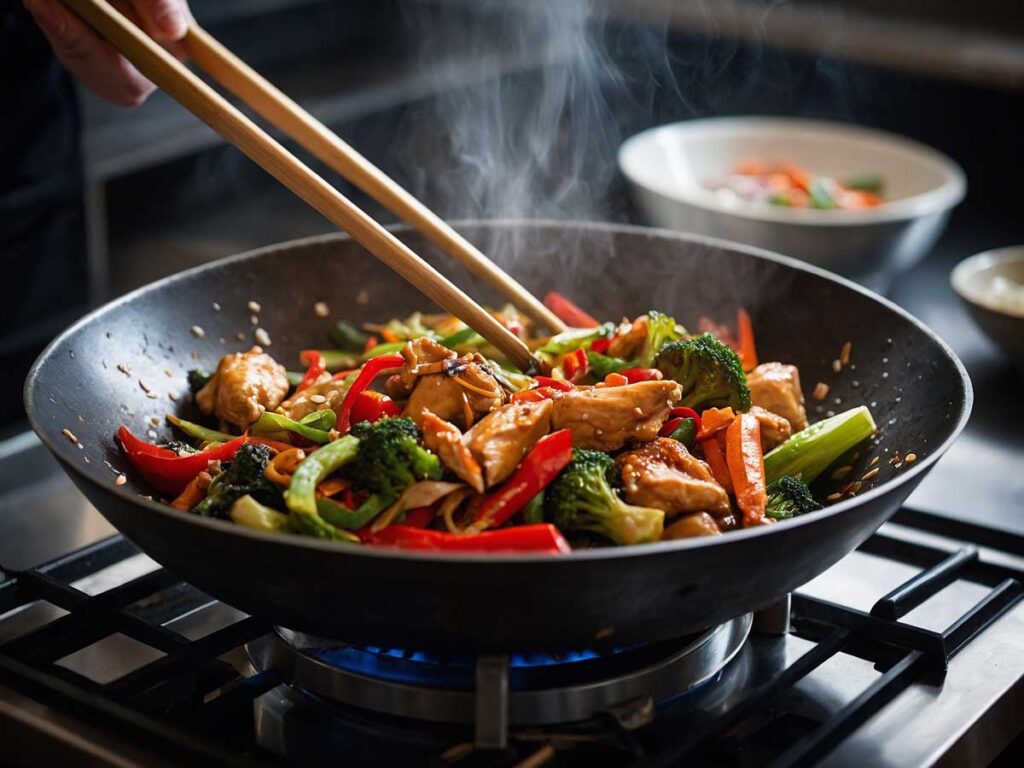
By not overcrowding the wok, you allow each ingredient to cook properly, resulting in better texture and flavor.
Following these tips on preheating the wok, choosing the best oil for wok cooking, keeping food dry, using the best utensils for wok, managing wok cooking temperature, and avoiding overfilling the wok will help you achieve non-stick perfection. These practical steps are easy to incorporate into your cooking routine, ensuring consistently great results with your wok.
Also learn: Why Use a Wok Instead of a Frying Pan
FAQs on Prevent Food From Sticking to the Wok
Final Thoughts
To prevent food from sticking to the wok, remember these key points. First, always preheat your wok until it starts to smoke. This ensures the metal’s pores close, creating a non-stick surface.
Second, choose oils with high smoke points like canola, grapeseed, or peanut oil. These oils withstand high heat and maintain a slick surface.
Third, keep your food dry before cooking to avoid temperature drops that cause sticking.
Use the right utensils, like long-handled wooden or silicone tools, to protect the wok’s surface.
Finally, avoid overcrowding the wok by cooking in batches if necessary. Following these wok cooking tips will enhance your cooking experience and ensure delicious, perfectly cooked dishes every time.
Stay connected with Kit Yum for more knowledge base information.
